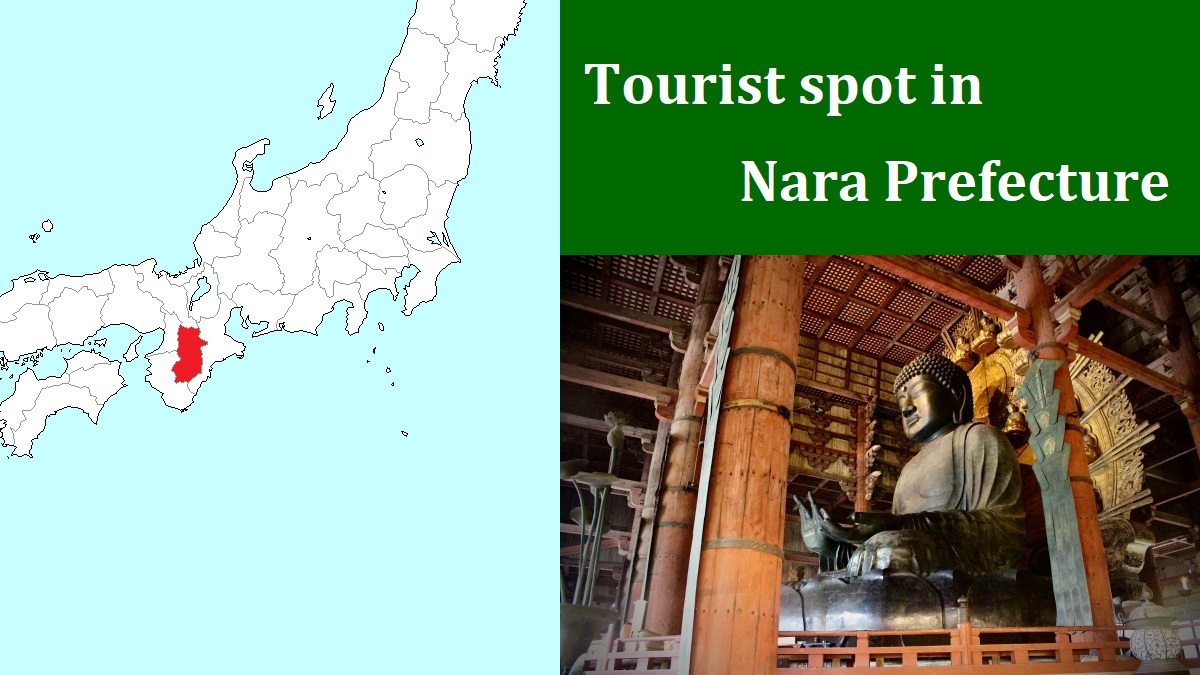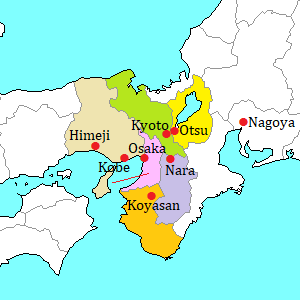Heijo Palace Site [平城宮跡]
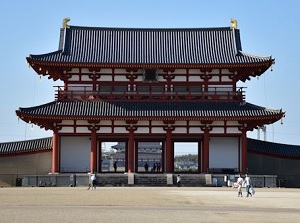
Suzakumon in Heijo Palace
Photo by Railstation.net
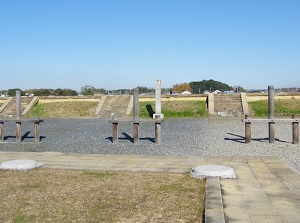
Ruin of Daigokuden
Photo by Railstation.net
Heijo Palace Site is the site of the ancient capital of Nara in the 8th century.
It is located about 3 km west-northwest of JR Nara station.
This is one of 9 constructions of "Historic Monuments of Ancient Nara" designated as a World Heritage Site.
From the end of the 6th century, the political center of Japan was in Asuka area located about 25 km south of Nara city.
In 708, the imperial edict for transfer of the national capital to Heijo-kyo (平城京) was issued by Empress Genmei (661-721).
Then the capital was moved to this area in 710.
First, only Heijo Palace was completed.
And the new city had been constructed sequentially.
The city area of Heijo-kyo was nearly a square and is about 4.3 km from east to west and about 4.8 km from north and south.
It had grid of streets and avenues.
It is said that it was modeled after Chang'an, the capital of Tang (current Xian in China).
And an additional area was also constructed adjoining the northeast edge of the city area.
The position is nearly equal to the central area of current Nara city.
Todaiji temple was built at the northeast end of the additional area.
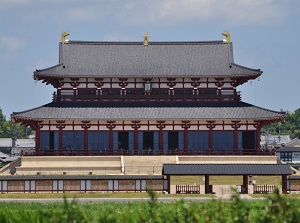
Restored Daigokuden in Heijo Palace
Photo by Railstation.net
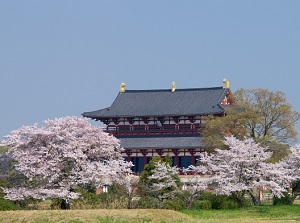
Daigokuden in spring
Heijo Palace was the center of the nation.
There were the Emperor's residence, the palace for ceremony, and the offices of the government.
It was constructed at the center of the northern end of this city.
The site was a square with a side 1 km long, and was surrounded with high fences.
In 740, the capital was moved to Kuni-kyo located about 10 km north of Nara, but it was moved to Heijo-kyo again in 745.
The capital of Heijo-kyo had continued until 784.
At that time, the capital was moved to Nagaoka-kyo near current Kyoto and was moved to current central Kyoto in 794.
Since that, Heijo-kyo has never become the capital of Japan.
By the way, another name of "Heijo-kyo" is "Nara".
Originally, this area had been called "Nara", and "Heijo-kyo" was a name for the new city.
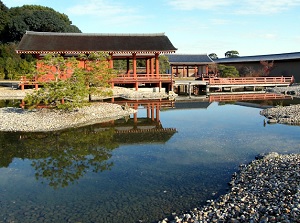
Toin Teien in Heijo Palace
Photo by Railstation.net
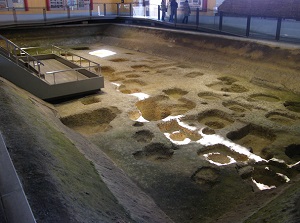
Museum of Ruin in Heijo Palace
Photo by Railstation.net
The investigation of this site was begun around the middle of the 19th century.
Then the the excavation and research of this site has been conducted since 1924.
This site is opened to the public as a state-operated park.
A few buildings and a garden have been restored and a museum is set up in the wide site.
Suzakumon gate (朱雀門) was restored.
It was the main gate of Heijo Palace and is at the south edge of the site.
Daigokuden (大極殿) is the main palace, and there were two Daigokudens in this site.
One of them was restored in 2010.
Toin Teien (東院庭園) garden is a ruin of the garden located at the southeast edge of the site.
There is a pond, and a few buildings are restored.
And, there is the museum around Heijo-kyo at the northwest part of the site.
How to get here
Get off at Yamato-Saidaiji station on Kintetsu Line.
About 6 minutes from Kintetsu-Nara station.
Then, about 10 minutes walk from there.

